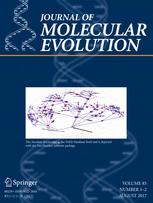Ver ítem
- xmlui.general.dspace_homeCentros e Institutos de InvestigaciónCICVyA. Centro de Investigación en Ciencias Veterinarias y AgronómicasInstituto de GenéticaArtículos científicosxmlui.ArtifactBrowser.ItemViewer.trail
- Inicio
- Centros e Institutos de Investigación
- CICVyA. Centro de Investigación en Ciencias Veterinarias y Agronómicas
- Instituto de Genética
- Artículos científicos
- Ver ítem
Microevolution rather than large genome divergence determines the effectiveness of legume–rhizobia symbiotic interaction under field conditions
Resumen
Despite the vast screening for natural nitrogenfixing isolates by public and private consortia, no significant progresses in the production of improved nitrogenfixing inoculants for alfalfa production have been made in the last years. Here, we present a comprehensive characterization of the nitrogen-fixing strain Ensifer meliloti
B399 (originally named Rhizobium meliloti 102F34), probably the inoculant most widely used in alfalfa production since the
[ver mas...]
Despite the vast screening for natural nitrogenfixing isolates by public and private consortia, no significant progresses in the production of improved nitrogenfixing inoculants for alfalfa production have been made in the last years. Here, we present a comprehensive characterization of the nitrogen-fixing strain Ensifer meliloti
B399 (originally named Rhizobium meliloti 102F34), probably the inoculant most widely used in alfalfa production since the 1960s. Complete nucleotide sequence and
genome analysis of strain B399 showed that the three replicons present in this commercial strain and the model bacterium Ensifer meliloti 1021 are extremely similar to each other in terms of nucleotide identity and synteny conservation. In contrast to that observed in B399-treated plants, inoculation of plants with strain 1021 did not
improve nitrogen content in different alfalfa cultivars under field conditions, suggesting that a small genomic divergence can drastically impact on the symbiotic phenotype. Therefore, in addition to the traditional screening of natural
nitrogen-fixing isolates, the genome engineering of model strains could be an attractive strategy to improve nitrogen fixation in legume crops.
[Cerrar]

Fuente
Journal of molecular evolution 85 (3-4) : 79–83 (October 2017)
Fecha
2017-08
ISSN
0022-2844 (Print)
1432-1432 (Online)
1432-1432 (Online)
Formato
pdf
Tipo de documento
article
Palabras Claves
Derechos de acceso
Restringido
 Excepto donde se diga explicitamente, este item se publica bajo la siguiente descripción: Creative Commons Attribution-NonCommercial-ShareAlike 2.5 Unported (CC BY-NC-SA 2.5)
Excepto donde se diga explicitamente, este item se publica bajo la siguiente descripción: Creative Commons Attribution-NonCommercial-ShareAlike 2.5 Unported (CC BY-NC-SA 2.5)

